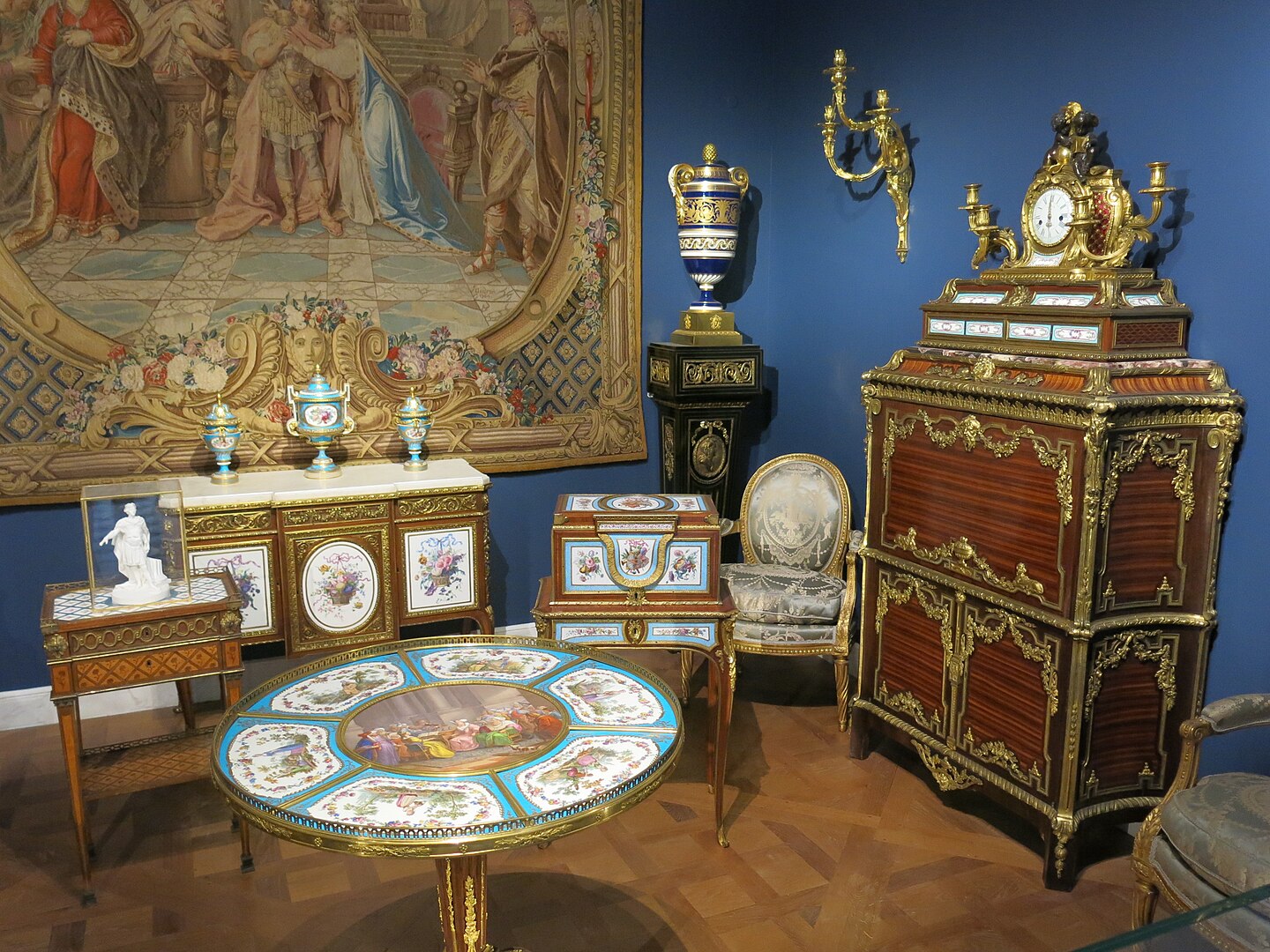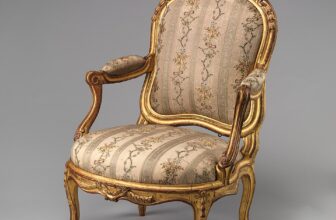
| Shopping Ads: Invest in Hidden Masterpiece: Rare Antique Oil Paintings For Sale. Limited Originals Available 💰😊 Are you looking for authentic hidden masterpiece? Explore old master antique oil paintings from the Renaissance and Baroque eras. From 16th-century portraits to 18th-century landscapes. Authenticity guaranteed, Old Master antique oil paintings for sale. Shop Now! 🎨 Renaissance And Baroque Art Landscape Antique Paintings Old Master Portrait Paintings |
The Legacy of Elegance: Is Louis XVI neoclassical?
In the heart of 18th-century France, during a time when revolution brewed and art was undergoing a transformation, a new style of furniture emerged, one that would forever be etched in the annals of design history. This was the era of Louis XVI furniture, a paragon of neoclassical elegance, born from the opulence of royalty yet rooted in the rational ideals of the Enlightenment. Today, Louis XVI furniture remains an enduring symbol of sophistication and classical beauty.
This story is a journey through time and aesthetics. We’ll explore the key characteristics of Louis XVI furniture, understand its neoclassical roots, learn how to identify a Louis XVI chair, and discover the differences between Louis XV and Louis XVI furniture.
The Birth of a New Aesthetic
The year was 1774. Louis XVI had just ascended to the throne of France, inheriting a kingdom rich in art, architecture, and a thriving culture of decorative arts. However, beneath the gilded surface of Rococo flamboyance, championed by his grandfather, Louis XV, a quiet revolution in taste was unfolding.
Inspired by archaeological discoveries in Pompeii and Herculaneum, the European elite began to gravitate toward a style that echoed the rationality and symmetry of Ancient Greece and Rome. This movement, known as neoclassicism, infiltrated every aspect of design, including furniture.
Under the influence of Queen Marie Antoinette and skilled cabinetmakers like Jean-Henri Riesener and Georges Jacob, the new Louis XVI style blossomed. It replaced Rococo’s curved lines and ornate asymmetry with a return to geometry, clarity, and timeless grandeur.
What Are the Characteristics of Louis XVI Furniture?
To the trained eye, Louis XVI furniture is an ode to symmetry, proportion, and restrained luxury. Here are the defining characteristics that distinguish this revered style:
1. Symmetry and Straight Lines
Unlike the flowing, sinuous lines of Louis XV furniture, the Louis XVI style is characterized by straight lines and balanced proportions. Every piece exudes a sense of calm, order, and formality. Chairs, for example, have straight or fluted legs and a backrest that is square, oval, or medallion-shaped.
2. Fluted Legs
The legs of tables, chairs, and commodes are often tapered and fluted, resembling classical columns. This detail is directly inspired by Greco-Roman architecture and is a hallmark of neoclassical furniture design.
3. Motifs from Antiquity
Louis XVI furniture often includes decorative motifs such as:
-
Laurel wreaths
-
Rosettes
-
Acanthus leaves
-
Greek key patterns
-
Ribbons and bows
-
Urns and torches
These elements evoke the imagery of ancient temples and sculptures, aligning perfectly with the Enlightenment-era fascination with classical antiquity.
4. Refined Materials and Finishes
Crafted from fine woods like mahogany, walnut, and ebony, Louis XVI furniture showcases the virtuosity of French ébénistes (cabinetmakers). Many pieces are adorned with gilt-bronze mounts, marquetry, or vernis Martin lacquer, highlighting both function and ornamentation.
5. Upholstery
Fabrics were typically silk, velvet, or tapestry, often in pastel shades or muted tones such as ivory, pale green, or powder blue. Embroidered floral motifs and neoclassical themes were popular.
Is Louis XVI Furniture Neoclassical?
Absolutely. Louis XVI furniture is a quintessential example of neoclassical design.
Neoclassicism emerged in the mid-18th century as a response to the Rococo’s excessive ornamentation. It sought to revive the ideals of antiquity, harmony, order, and reason. Louis XVI furniture reflects these values in both form and function.
While Rococo design celebrated asymmetry and whimsy, Louis XVI furniture brought discipline and balance. The use of classical elements, fluted legs, clean lines, and ancient motifs, clearly aligns it with the broader neoclassical movement that also influenced architecture, painting, and sculpture during the same period.
In essence, Louis XVI furniture is French neoclassicism made tangible in wood and gilt bronze.
How to Identify Louis XVI Chairs?
To identify a Louis XVI chair, one must become a detective of design, observing the form, proportions, and decorative details. Here’s what to look for:
1. Shape of the Backrest
Louis XVI chairs commonly feature:
-
Medallion backs – oval or round, sometimes bordered by carved ribbons
-
Rectangular backs – framed in wood with subtle carvings
These contrasts with the open, flowing lines of Louis XV chairs, which often had cartouche-shaped or serpentine backs.
2. Legs
One of the most reliable clues: tapered, fluted legs. They are typically straight and mimic classical columns, often capped with carved rosettes at the joint where the leg meets the seat frame.
3. Armrests
Armrests on Louis XVI chairs are usually straight and supported by vertical posts that extend down to the seat. The curves are minimized, favoring precision and linearity.
4. Carvings and Decoration
Subtle and refined carvings, such as bows, laurel leaves, and acanthus, decorate the frame, but with much more restraint than the elaborate scrolls of the Rococo era.
5. Upholstery and Materials
Look for high-quality upholstery in silk or tapestry with classical patterns. The frame may be painted in light colors with gold gilding, though natural wood finishes are also common.
Louis XV vs Louis XVI: A Study in Contrast
At a glance, Louis XV and Louis XVI furniture may appear similar to the untrained eye. But upon closer inspection, they represent two very different philosophies of design.
Louis XV (Rococo) Furniture:
-
Curved lines dominate the design, reflecting the Rococo love for movement and sensuality.
-
Asymmetry is common, with ornate carvings and motifs like shells, C-scrolls, and flowers.
-
Cabriole legs, legs that curve outward and then inward, are iconic features.
-
Furniture feels intimate, playful, and romantic.
-
Commonly lacquered in rich colors or adorned with intricate marquetry.
Louis XVI (Neoclassical) Furniture:
-
Emphasis on straight lines and symmetry.
-
Classical motifs, like garlands and urns, replaced the organic Rococo themes.
-
Legs are straight and fluted, modeled on Greek columns.
-
Overall tone is more formal, rational, and elegant.
-
Finishes often lighter, with white and pastel tones dominating.
In short, Louis XV furniture celebrates nature and fantasy, while Louis XVI pays homage to antiquity and reason.
Louis XVI in Modern Interiors
Though rooted in the 18th century, Louis XVI furniture has proven to be remarkably versatile. Its timeless forms and elegant restraint make it a popular choice for modern interiors, especially those seeking a touch of classical charm without excessive ornamentation.
Interior designers today often mix Louis XVI chairs or commodes with contemporary pieces to create striking contrasts. For example:
-
A medallion-back Louis XVI chair upholstered in bold velvet can anchor a minimalist space.
-
A gilded Louis XVI console table may serve as an accent in a neutral-toned hallway.
-
Modern lighting and abstract art juxtaposed with neoclassical lines can produce a refined, eclectic look.
Louis XVI furniture’s ability to balance history with modernity is perhaps its greatest asset.
The Craftsmanship Legacy
Beyond its beauty, Louis XVI furniture is a testament to extraordinary craftsmanship. French ébénistes of the era were among the finest in Europe, trained in the guilds that governed every aspect of production, from carving and gilding to marquetry and veneering.
Notable cabinetmakers included:
-
Jean-Henri Riesener – known for royal commissions and intricate marquetry
-
Georges Jacob – a master of carved and gilded wood chairs
-
David Roentgen – a German-born craftsman who worked in the Louis XVI style, famous for mechanical furniture
Each piece was more than a function, it was a work of art, a manifestation of the Enlightenment’s ideals made tangible through exquisite design.
A Style that Endures
As we close this exploration of Louis XVI furniture, we’re reminded that great design transcends time. What began as a royal preference evolved into a symbol of neoclassical refinement that continues to inspire architects, decorators, and collectors to this day.
Whether in a grand Parisian salon or a contemporary apartment, a Louis XVI piece brings with it not just elegance, but a story, of artistry, philosophy, and the enduring appeal of balance and beauty.
And so, the legacy of Louis XVI furniture lives on, not merely as relics of a bygone era, but as timeless touchstones in the ever-evolving narrative of design.



